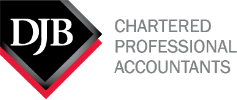There was a time when selling a family medicine practice in Ontario was very rare as the demand for family doctors exceeded the supply so the patient lists weren’t overly valuable on an open market. If a practice was sold, it was likely for the “book value” of its assets (such as medical equipment and furniture and fixtures) with no premium for its patient lists and goodwill. However, with new restricted funding models put in place in Ontario for family medicine practitioners, certain practices now have increased value for new or incoming family doctors.
The difficult part is putting a value on your practice. Essentially, the value is whatever someone is willing to pay for your practice. While incoming doctors are often hesitant to pay a substantial amount for an established patient list (due to already existing debt and thoughts that family doctors are still in high demand), structures such as Family Health Organizations (FHO) present an opportunity for a “better” funding model that may create value for incoming doctors to invest in.
In previous years, the Province of Ontario created a focus on team-based family medicine funding models such as FHO’s. These allowed specific funding models for the team-based approach as a way to encourage doctors to practice family medicine and create a service model that benefited the patients. With recent government restructuring of its funding models, it is now limiting the ability to setup new team based models such as FHO’s to primarily remote areas. Original FHO agreements are being grandfathered so this creates opportunities to join existing models that have already been setup.
While it can be difficult to estimate the value of your practice, if you are part of an FHO in an area that is restricted for new team based models, a good start is to determine the annual premium being paid on your funding model versus a non-FHO funding model. A valuation multiple could then be applied to the annual premium to determine the value of the funding model to a third party.
The valuation will depend on a number of factors such as the city/town where your practice operates, the type of building in which you operate and the condition of the building and equipment. You would also need to factor in whether or not you own the practice building or if you are locked into a lease agreement for a number of years.
The tax implications on the sale of your practice would be determined by the allocation of the proceeds between the physical assets versus the intangible assets such as the patient list.
The physical assets would have a recapture tax at regular business tax rates for any capital cost allowance (CCA) deductions taken in the past if the proceeds attributed to the asset were equal to or more than its original cost. Any proceeds greater than the original cost would be treated as a capital gain with half of the amount being taxable at the investment income tax rates.
The sale of the patient list or practice roster would be treated as a sale of eligible capital. There are new rules that have been proposed for the sale of eligible capital for sale transactions that close after 2016. These new rules treat eligible capital the same as physical assets whereby any previous CCA will be treated as regular business income and any amount greater than the original cost will have half taxed at the investment income tax rate.
The valuation of family physician practices is constantly changing but the current models create an opportunity to sell your practice for a premium if you are in a populated area and are operating in one of the desired family health models. It is important to talk to your professional advisors in advance to ensure you are planning properly for a potential sale and are aware of the implications of such a sale (such as taxes). If you have any specific questions or require more information, please contact DJB.


